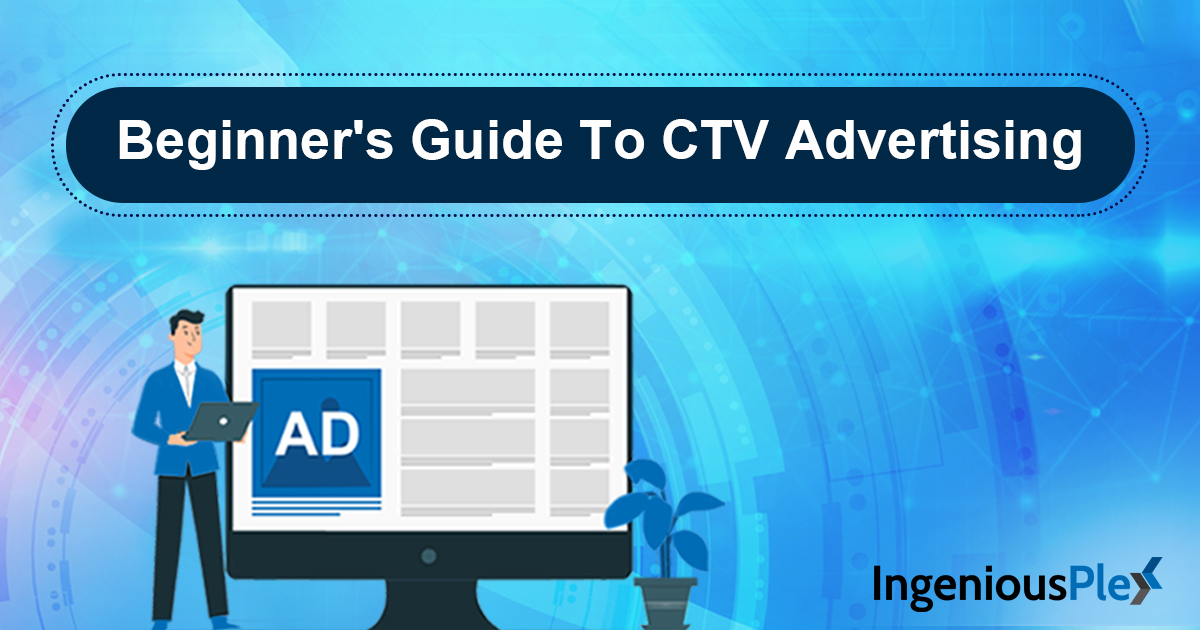What Is CTV Advertising?
Connected TV or CTV as it is called is a constant buzzword doing rounds in the advertising industry. However, still many aren’t sure what it encompasses and how it works, and it’s potential. CTV, simply put, is rather short and skippable online advertising displayed on smart TVs and OTT devices that can be connected to the internet. The ads delivered via Connected TV are highly targeted to the relevant audience.
For a fact, CTV advertising is projected to reach $11.36 in the year 2021 and $18.29 billion by 2024 (1). Younger audiences are most likely to be the consumers of CTV advertising which also makes it one of the reasons why it has the majority of the market share. Although there are multiple challenges that are left to be tackled in the CTV universe, it still remains the top choice for most advertisers if reaching a wider audience is their motive.
How Does CTV Advertising Work?

Without sounding too technical, let’s understand that CTV is the amalgamation of the internet and web 2.0 features in the new-gen TVs. OTT content is the one that is served through the internet without the implication of multi-system operators. To simplify it further, consider the CTV as a fusion of TV and the internet.
While using Connected TV devices, viewers can access the video streaming services like Netflix, Hulu, YouTube, etc to view digital content. Such new-gen devices are interactive in nature as compared to the traditional TV which is majorly dependent on media broadcasting.
In the programmatic universe, it’s important to understand the specific mechanics of the said environment. Various programmatic deals have various terms and conditions pertaining to the inventory access priority. CTV ads are being traded in private marketplaces that are invitation-only marketplaces. Here, advertisers have the benefit to address the unique premium inventory.
Benefits Of Connected TV Advertising

Targeting Options
There is a multitude of targeting options available in the CTV universe and perhaps this is one of the primary benefits that advertisers have. For using a smart TV, users are required to log in via universal identifiers. Third-party data is used to complete users’ profiles based on geolocation, demographics, interests, etc. Campaigns that are precisely targeted maintain relevance with the audience and hence deliver better engagement and value.
Enhanced Engagement Rate
In the case of CTVs, users choose the content they want to consume, and hence the ads that they are served with match their interests and satisfy them. This leads to a better understanding of the message and hence a positive attitude towards the ads.
Best Viewability
CTV naturally offers a full-screen ad experience and most ads are not skippable unless the user has paid for premium services. This also results in a high completion rate and users usually tend to pay heed to and watch CTV ads for longer. Other than this, owing to the co-viewing factor, the ads are being watched by more than one person at a time.
Maintains Relevance
In regards to CTV, users generally choose the content they want to consume and hence the ads served are based on their preferences. This helps maintain relevance with the audience and hence communicates the message in an efficient way and boosts engagement.
Reduced Ad Fraud
There’s a relatively lesser risk of fraud involved in CTV advertising due to the content being streamed live. Plus, the content that is streamed is chosen by the users themselves in terms of the content that they’d like to view.
Easily accessible
Getting started with CTV advertising requires the very same assets like ad server tags as any other digital video. It can easily be included in digital media planning without competing with any traditional TV advertisements. CTV is simply a digital extension with a wider reach and comprehensible video messages.
Key Metrics For Measuring The Effectiveness Of CTV Campaigns
In the Connected TV universe, the measurement metrics are somewhat different from the display advertising world. Here, clicks can only be tracked when a user is viewing the CTV content on a laptop. Hence, there’s no point in relying upon Click Through Rate or Post-click Conversions. Some of the primary metrics to consider while measuring the performance of CTV advertising are Video Completion Rate (VCR) which is the percentage of viewers who watched your full ad. Reach is the number of unique users your ad was exposed to. Cost Per Point implies determining the price at which your ad is being reached to the desired audience. This can be calculated by dividing your total media cost by GRP, and Ad Delivery by Device which analyses the devices your ads were viewed at.
Final Words: What Is The Future Of CTV Advertising?

Owing to the pandemic, the time we spend consuming the CTV content has increased. Even the older generation in the age group of over 55 have started to embrace the new way of watching television (2). With this sudden hike, advertisers are presented with a challenge of fragmentation. Understanding user behavior has become difficult. It is possible that a user starts to watch a series or a movie on a TV with family and continues with the same while commuting on his phone and then finishes watching it on his laptop or tablet. Hence, new ways are to be introduced to understand the fragmented user behavior.
Besides this, as we discussed, CTV offers a better advertising experience to the users as they only receive ads that are relevant to them. So for now, in regards to CTV, it’s important to work on transparency as much as possible. There’s a need to come up with better and standard ways to measure the effectiveness of the CTV campaigns and offer liberty to advertisers to shift their budget from one channel to another if required. It is expected that CTV will most certainly grow considering the benefits and features discussed above and areas that can be worked upon.

